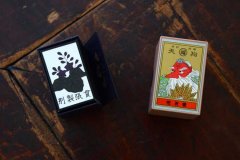Pacack
Super Pac-Fan
- Joined
- Jun 7, 2013
- Messages
- 8,066
- Location
- US (Mountain Time, -7 Hours)
- NNID
- Pacack
- 3DS FC
- 0688-5284-6845
Welcome to the Support Thread for Nintendo's Tengu!

FAQ
Who?
The Tengu (天狗) is a character from Nintendo's second most popular hanafuda card deck, a depiction of the mythological Tengu from Japanese folklore. Likely created a few years after Nintendo's official inception in 1889, the Tengu set was created as a cheaper alternative to Nintendo's premium Daitoryo deck.
What does a Tengu have to do with Nintendo?
The Tengu is a direct throwback to hanafuda's gambling roots. The word 花 “flower“ and 鼻 “nose” are both pronounced hana (as in hanafuda). Because of this, the Tengu became associated with hanafuda cards in Japan. (Including becoming an official mascot for some companies.) This pun on the nose became so widespread that people looking to illegally gamble would scratch their noses outside of suspected centers for gambling to indicate that they were looking to play.
Further, Nintendo's name (任天堂) contains 天 (ten) and 堂 (do), meaning heaven and shrine separately, and paradise when combined. 天 is likely borrowed from Tengu (天狗), while 堂 potentially refers to abandoned shrines being used as places for gambling.
Interestingly, while 任 (nin) literally means "authority," "obligation," or "entrust to," it's also the character that starts the word 任侠 (ninkyo), which means "chivalrous." This doesn't seem particularly interesting until one realizes that the Yakuza - who are infamous for their illegal gambling (and who are known to get tattoos of folkloric characters like the Tengu) - refer to themselves as a "chivalrous organization." This leads some to question whether Nintendo's name (officially stated to mean "entrust/leave [luck] to the authority of heaven/paradise,") is also meant to be interpreted as "paradise for the chivalrous," a nod to their notorious clientele.
So, that's cool and all, but...what does it have to do with Smash Bros.?
The previous three (four counting SSB3DS as a separate title) Super Smash Bros. games have included characters that personify a part of Nintendo's long-running history.
Mr. Game & Watch was inspired by the characters found in Nintendo's Game & Watch games, which became Nintendo's first major financial success (selling 43.4 million units) and first handheld, cementing their place in the video game industry.
R.O.B. was an accessory for the NES which was used to market the console as a novel toy to retailers and consumers in a market which had reservations about home video game consoles following the North American Video Game Crash of 1983. The inclusion of R.O.B. with the system convinced major retailers to sell the console, ultimately leading to the success of the NES and the revival of the entire Western video game industry. (Source)
Duck Hunt is a character which is a little less obvious about its historical ties. However, I would argue that the character represents not only the extremely well-selling Duck Hunt video game, but also the light gun as a whole. This included much earlier points in Nintendo's history, including the Beam Gun, Laser Clay Shooting System, Wild Gunman, and Duck Hunt products released in the 1970s. These products, while technically not "video games" are an early example of electro-mechanical games, which greatly contributed to the rise of the early arcade industry.
Nintendo was the predominant producer of light guns for the home in Japan at this time, and they had obtained a contract with Magnavox to produce the light gun peripheral for the first home video game console, the Magnavox Odyssey. Nintendo's involvement in the project gave them direct insight into the soon-to-be burgeoning home console market and to the North American video game market in particular, which likely influenced them to bundle a Light Gun (alongside R.O.B.) with the NES in North America. In fact, if it weren't for the Light Gun connecting them to Magnavox, Nintendo may have not decided to enter the home video game market at all.
If this pattern continues, it's reasonable to conclude that another character will be added as a nod to Nintendo's history. Who better to represent the history of Nintendo than one of the first characters Nintendo ever made? Representing Nintendo's roots as a maker of hand-painted hanafuda cards, the Tengu could be the quirkiest character in Smash Bros. yet.
Arguments
Why use the second most popular hanafuda deck rather than the most popular one?
Well, it's perfectly fair to argue that the Napoleon figure from the Daitoryo decks should be used instead of the Tengu. It's true that the Napoleon figure was used more often like a "mascot" than the Tengu was. However, many people find that the Tengu is less jarring a character to see than a caricature of a historical person. Further, the Tengu has more to do with hanafuda specifically than Daitoryo does, making it more natural for the Tengu to have a moveset with hanafuda cards than Napoleon.
Tengu cannot be included in Smash Bros. because he did not originate from a video game.
This is a fair argument, definitely. However, R.O.B. did not originate from a video game either, and Mr. Game & Watch didn't even exist until Melee. While there were characters that looked like him in the Game & Watch titles, the character himself was an amalgam of Game & Watch characters created specifically for Melee.
Further, much like R.O.B. before his inclusion in Brawl, hanafuda has been referenced a number of times by Nintendo:
Nintendo has produced several Hanafuda decks featuring Mario and Pokemon characters for a few years now, the first of which was a Club Nintendo exclusive. They all parody the Daitoryo box.


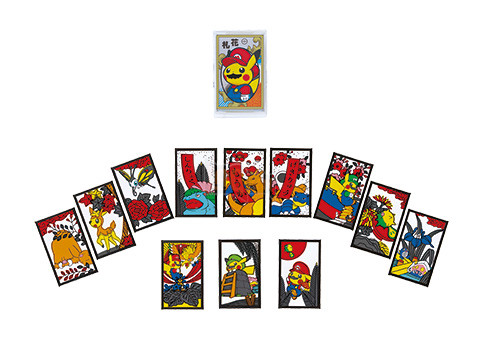

In the Japanese version of Album B, there is a reference to the Bush Warbler from the February suit.
![]()
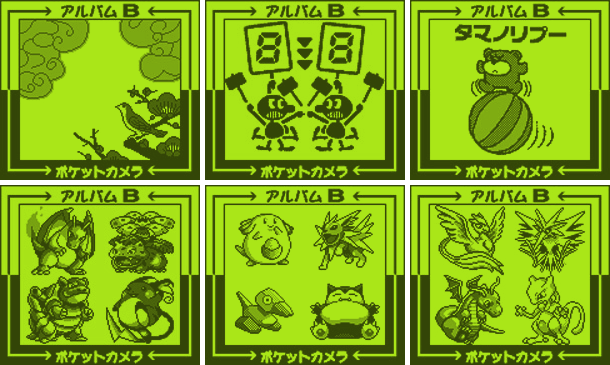
The "Talisman of Life" treasure in the game is actually a box of Daitoryo cards.
![]()
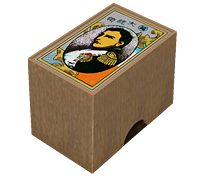
The Nintendo-created Clubhouse Games for Nintendo DS included Koi-Koi (the most popular hanafuda game) in its collection.
![]()

In the Japanese version of Mona's game "Quite Touched", the cherry blossom ribbon card appears.
![]()

You could purchase three separate hanafuda themes for your 3DS right now if you so desired.
![]()
![]()
![]()

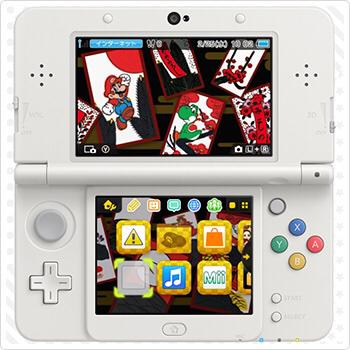

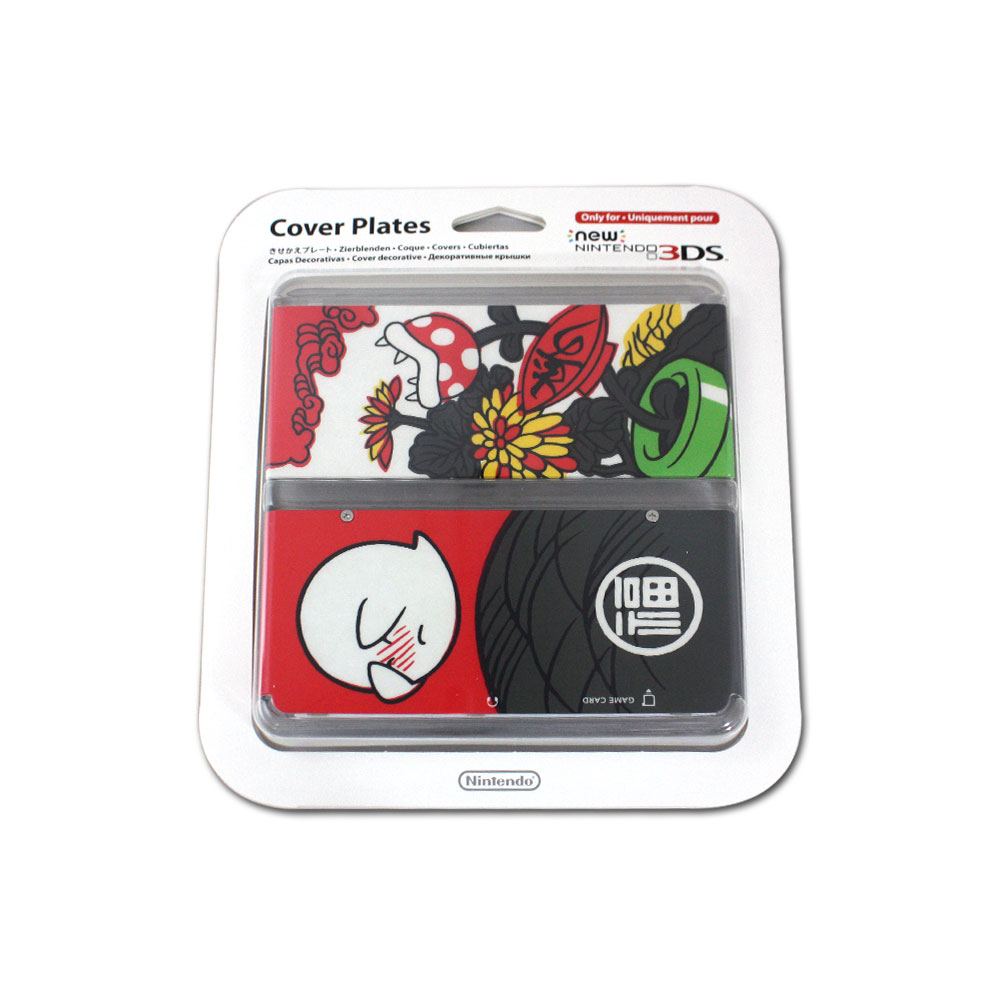
The February Bush Warbler card is referenced.
![]()
![]()


When hackers broke into the NES Mini's emulation software, they found the following message:
This is the hanafuda captain speaking. Launching emulation in 3...2...1. Many efforts, tears and countless hours have been put into this jewel. So, please keep this place tidied up and don't break everything! Cheers, the hanafuda captain.
The lapels on the Happi outfit include the lettering 任天堂, Nintendo's name in Japanese, with the Marufuku logo above it. This same lettering is prominent on Nintendo products, namely Hanafuda, from the 1950s.

He's from a box. How would he possibly fight?
This is an important reason to consider the character, as there's a lot to draw from using the art of hanafuda as inspiration.

There are twelve suits for every month of the year, each represented by a flower. Each suit has four cards, including two commons and two special cards. Games are played by collecting sets, such as commons, ribbons, animals, or "bright" cards. If you're interested, you can play Koi-Koi (the most popular hanafuda game) here.
If you're having trouble seeing how that could fit into a cohesive moveset, here's one that I made as an example for Daitoryo in 2013.
Entrance Animation: General outline of character appears first, followed by the outline of the details, ending with Daitoryo being painted in. (Referencing the fact that all hanafuda cards were originally handcrafted by painting onto mulberry tree bark) OR A hanafuda card box drops from the sky and opens to release Daitoryo.
Properties: Height is roughly between Charizard’s and Samus’ heights. About as wide as Snake or Link at the widest point. Is somewhat lighter than would be expected, but not extremely so. Play style involves keeping the opponent at a distance with Daitoryo’s long-reaching moves.
Neutral Physical: Hits with pine branch for small damage. Only an AA combo, rather than an AAA combo. Does approximately 4% damage for the first hit and 6% for the second. Based off of basic pine cards from the December suit, only a double combo because there are only two commons in said suit)
Side Physical: Kicks the ground and sends a flurry of maple leaves forward. Has good range and may trip opponent. Does only 1% damage per leaf, but there are several leaves. Not the best knockback. (based off of the October Maple leaf commons)
Up Physical: Daitoryo waves some bush clover branches in a sweeping motion over his head (from front to back). Decent, but not amazing knockback that can be used for combos. Does about 9% damage. (based off of the July bush clover commons)
Down Physical: Causes a small peony bush to sprout directly in front of Daitoryo (butterflies fly out from it as well, but don’t do damage or interact with the opponent). Sends opponents almost directly upwards. Does approximately 11% damage and good knockback, but is predictable and has some frame lag. (based off of the June peony commons)
Dash Attack: Pulls out a chrysanthemum bouquet and swings it as he dashes (based off of the September chrysanthemums)
Up Smash: Thrusts an umbrella into the air and opens it (as it opens, a frog comes out for purely for humor’s sake). Does good damage and knockback, but has some beginning lag. (based off of Rain Man’s umbrella and frog)
Side Smash: Swings a fairly bulky paulownia branch forward at the opponent. Heavy damage and knockback. (based off of the January paulownias)
Down Smash: Makes tall susuki grass sprout from the ground on one side of him and a small willow tree on the other. The grass sends opponents diagonally up and away from Daitoryo, while the willow simply hits them upwards. (based off of the susuki grass and willow common cards)
Neutral Aerial: Daitoryo spins around (somewhat like Zelda's or Ness' nairs) in the air and irises fly out of his sleeves. Poor knockback and decent damage, but good range. (based off of the May irises)
Forward Aerial: Swings a large plain ribbon in front of him in an arch shape. It can hit easily, but is not very powerful. (based off of the ribbon cards)
Back Aerial: Snaps a large plain ribbon behind him like a whip. Hits very hard and with good range, but is extremely difficult to sweetspot. (based off of the ribbon cards)
Up Aerial: Butterflies fly out from out of Daitoryo’s sleeves and go straight upwards. They are hard to sweetspot, but they provide a decent killing move. Does only 3% damage and minimal knockback when not sweetspotted, but will do good damage with great knockback when they do.
Down Aerial: Hits whatever is in front of him with a plank from an eight plank bridge. Has spiking properties. (based on the May “animal” card)
Neutral Special: Throws poetry sake cup at the opponent. Does surprisingly high damage, but is very small and difficult to hit opponents with. (based off of the September poetry sake cup “animal” wildcard)
Side Special: Summons a boar, deer, and butterflies that run quickly as a herd across the stage until they disappears. High damage and knockback, but easily avoided, as they will only run straight. (based off of the July, October, and June animal cards and the Ino-Shika-Cho group.)
Up Special: Summons multiple types of birds that fly sporadically upwards and grabs onto a crane that lifts Daitoryo about as efficiently as Pit’s up special. Damage done to opponents depends on the birds that hit them. (based off of the various animal cards for January, February, April, August, and November.)
Down Special: Holds up the jinmaku (camp curtain) to absorb enemy projectiles. Does not deflect or heal the user. (based off of the March “bright” card)
Grab: Wisteria vines shoot out from Daitoryo's sleeves and ensnare the opponent. (based off of the wisteria cards)
Hit: The vines crush the opponent
Forward throw: Daitoryo throws the opponent with the vines and whips them quickly.
Back throw: Daitoryo throws the opponent over his shoulder.
Up-Throw: Daitoryo throws his opponent directly over his head and smacks him with the blue ribbon. (Reference to the blue ribbons)
Down Throw: Daitoryo releases his opponent and slaps them into the ground with the poetry ribbon. (Reference to the red poetry ribbons)
Final Smash: Summons Chinese Phoenix which attacks the entire stage with fire. The stage’s background becomes red with a completely white circle as the moon as this is happening. (Reference to the August and December Bright cards)
Neutral Physical: Hits with pine branch for small damage. Only an AA combo, rather than an AAA combo. Does approximately 4% damage for the first hit and 6% for the second. Based off of basic pine cards from the December suit, only a double combo because there are only two commons in said suit)
Side Physical: Kicks the ground and sends a flurry of maple leaves forward. Has good range and may trip opponent. Does only 1% damage per leaf, but there are several leaves. Not the best knockback. (based off of the October Maple leaf commons)
Up Physical: Daitoryo waves some bush clover branches in a sweeping motion over his head (from front to back). Decent, but not amazing knockback that can be used for combos. Does about 9% damage. (based off of the July bush clover commons)
Down Physical: Causes a small peony bush to sprout directly in front of Daitoryo (butterflies fly out from it as well, but don’t do damage or interact with the opponent). Sends opponents almost directly upwards. Does approximately 11% damage and good knockback, but is predictable and has some frame lag. (based off of the June peony commons)
Dash Attack: Pulls out a chrysanthemum bouquet and swings it as he dashes (based off of the September chrysanthemums)
Up Smash: Thrusts an umbrella into the air and opens it (as it opens, a frog comes out for purely for humor’s sake). Does good damage and knockback, but has some beginning lag. (based off of Rain Man’s umbrella and frog)
Side Smash: Swings a fairly bulky paulownia branch forward at the opponent. Heavy damage and knockback. (based off of the January paulownias)
Down Smash: Makes tall susuki grass sprout from the ground on one side of him and a small willow tree on the other. The grass sends opponents diagonally up and away from Daitoryo, while the willow simply hits them upwards. (based off of the susuki grass and willow common cards)
Neutral Aerial: Daitoryo spins around (somewhat like Zelda's or Ness' nairs) in the air and irises fly out of his sleeves. Poor knockback and decent damage, but good range. (based off of the May irises)
Forward Aerial: Swings a large plain ribbon in front of him in an arch shape. It can hit easily, but is not very powerful. (based off of the ribbon cards)
Back Aerial: Snaps a large plain ribbon behind him like a whip. Hits very hard and with good range, but is extremely difficult to sweetspot. (based off of the ribbon cards)
Up Aerial: Butterflies fly out from out of Daitoryo’s sleeves and go straight upwards. They are hard to sweetspot, but they provide a decent killing move. Does only 3% damage and minimal knockback when not sweetspotted, but will do good damage with great knockback when they do.
Down Aerial: Hits whatever is in front of him with a plank from an eight plank bridge. Has spiking properties. (based on the May “animal” card)
Neutral Special: Throws poetry sake cup at the opponent. Does surprisingly high damage, but is very small and difficult to hit opponents with. (based off of the September poetry sake cup “animal” wildcard)
Side Special: Summons a boar, deer, and butterflies that run quickly as a herd across the stage until they disappears. High damage and knockback, but easily avoided, as they will only run straight. (based off of the July, October, and June animal cards and the Ino-Shika-Cho group.)
Up Special: Summons multiple types of birds that fly sporadically upwards and grabs onto a crane that lifts Daitoryo about as efficiently as Pit’s up special. Damage done to opponents depends on the birds that hit them. (based off of the various animal cards for January, February, April, August, and November.)
Down Special: Holds up the jinmaku (camp curtain) to absorb enemy projectiles. Does not deflect or heal the user. (based off of the March “bright” card)
Grab: Wisteria vines shoot out from Daitoryo's sleeves and ensnare the opponent. (based off of the wisteria cards)
Hit: The vines crush the opponent
Forward throw: Daitoryo throws the opponent with the vines and whips them quickly.
Back throw: Daitoryo throws the opponent over his shoulder.
Up-Throw: Daitoryo throws his opponent directly over his head and smacks him with the blue ribbon. (Reference to the blue ribbons)
Down Throw: Daitoryo releases his opponent and slaps them into the ground with the poetry ribbon. (Reference to the red poetry ribbons)
Final Smash: Summons Chinese Phoenix which attacks the entire stage with fire. The stage’s background becomes red with a completely white circle as the moon as this is happening. (Reference to the August and December Bright cards)
Resources:
Series Symbol:


Roster Maker Icon:
Historical Archive

This comparison shows the art on the daitoryo deck box beside the painting L’empereur Napoléon Ier dans son cabinet de travail en 1807 (Emperor Napoleon the First Working in his Study in 1807) circa ~1837-1840, attributed to Hippolyte-Paul Delaroche. This is likely the portrait which was used as inspiration for the design.
This photo was released by the city of Kyoto in an article titled “Memories of Kyoto, 150 Years After The Meiji Period.” Allegedly, this is a photo of the "Marufuku Nintendo Card Company" from the year of the company's founding. (Source) Note the image of Daitoryo to the far left advertising the cards.
![]()
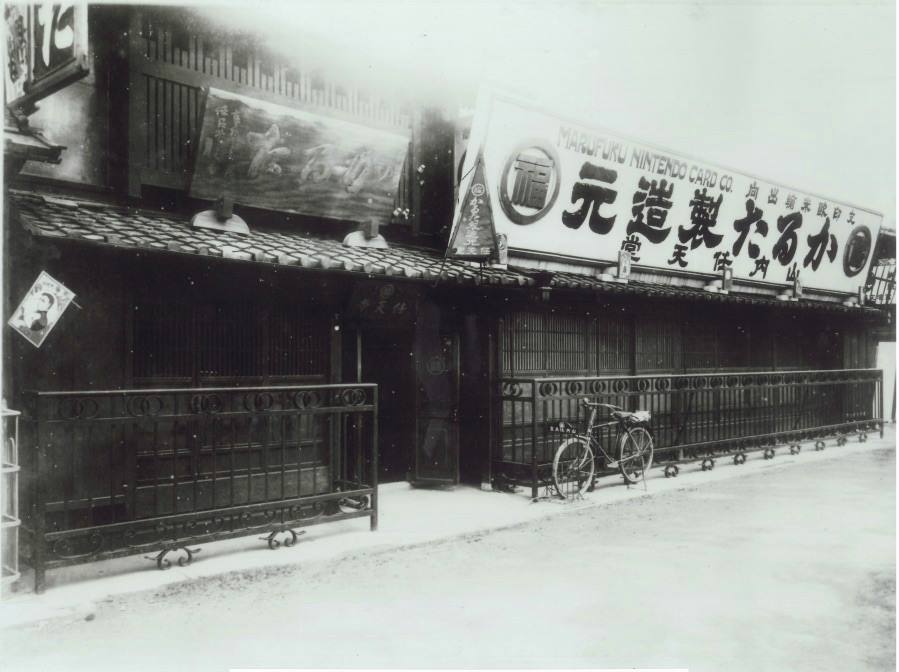
This deck is probably in a replacement box, so Daitoryo does not appear on it. However, the cards are old, and very interesting.Source
![]()
![]()
![]()
![]()
![]()
![]()
![]()
![]()








While not a daitoryo deck, this is very well preserved for its age. (Yes, the Tengu could also be used as a Hanafuda representative; no, it is not seen as often.)Source
![]()
![]()
![]()
![]()
![]()
![]()
![]()
![]()














This same display was also featured in Nintendo's Osaka 2007 Museum Event.
![]()

The cards for this deck would look like this:
![]()
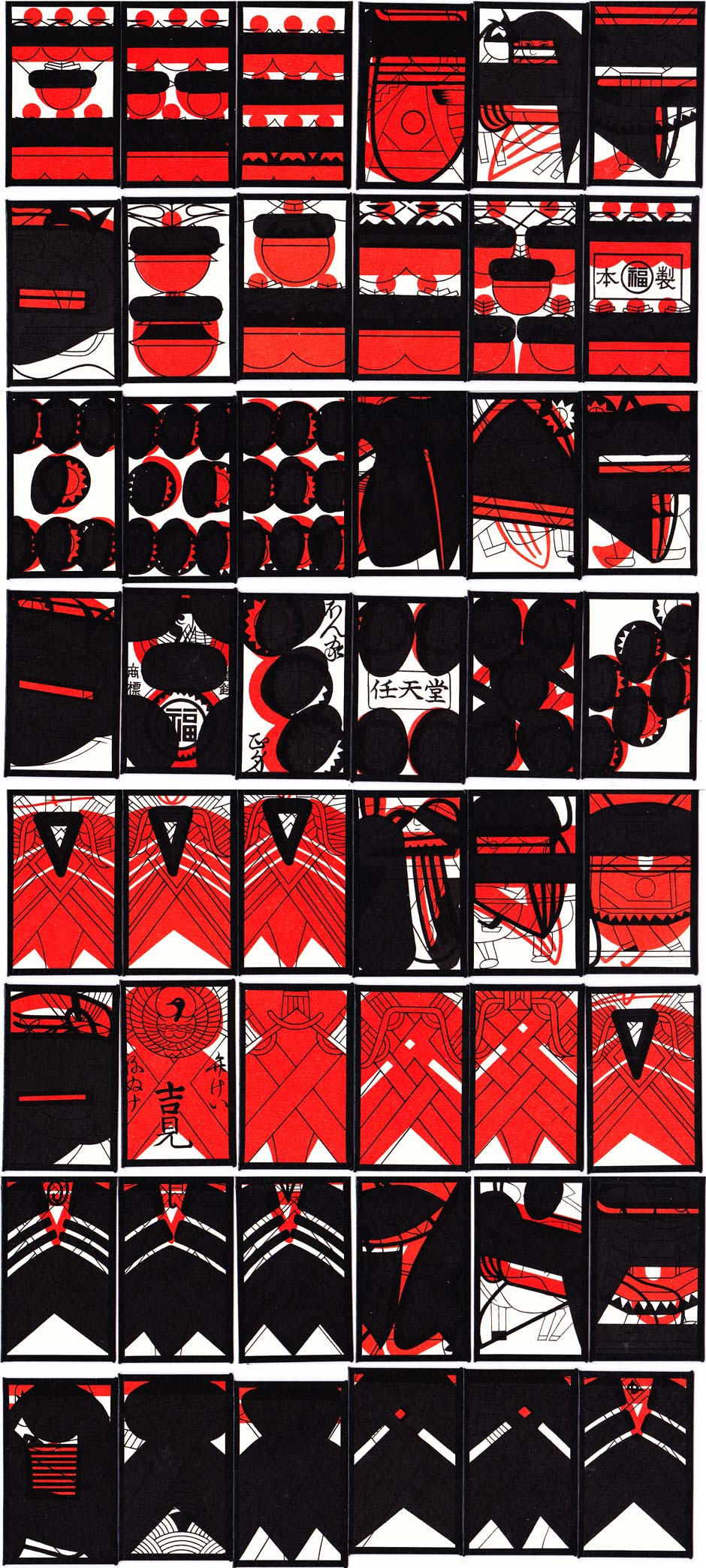
Tengu Supporters:
 Pacack
(Thread Owner)
Pacack
(Thread Owner)
 Gothitelle
Gothitelle
 NextChannelGames
NextChannelGames
Attachments
-
28.7 KB Views: 49
Last edited:














BPIRg2nqmw~~/s-l1600.jpg)
6nBPIRg5twYg~~/s-l1600.jpg)









































